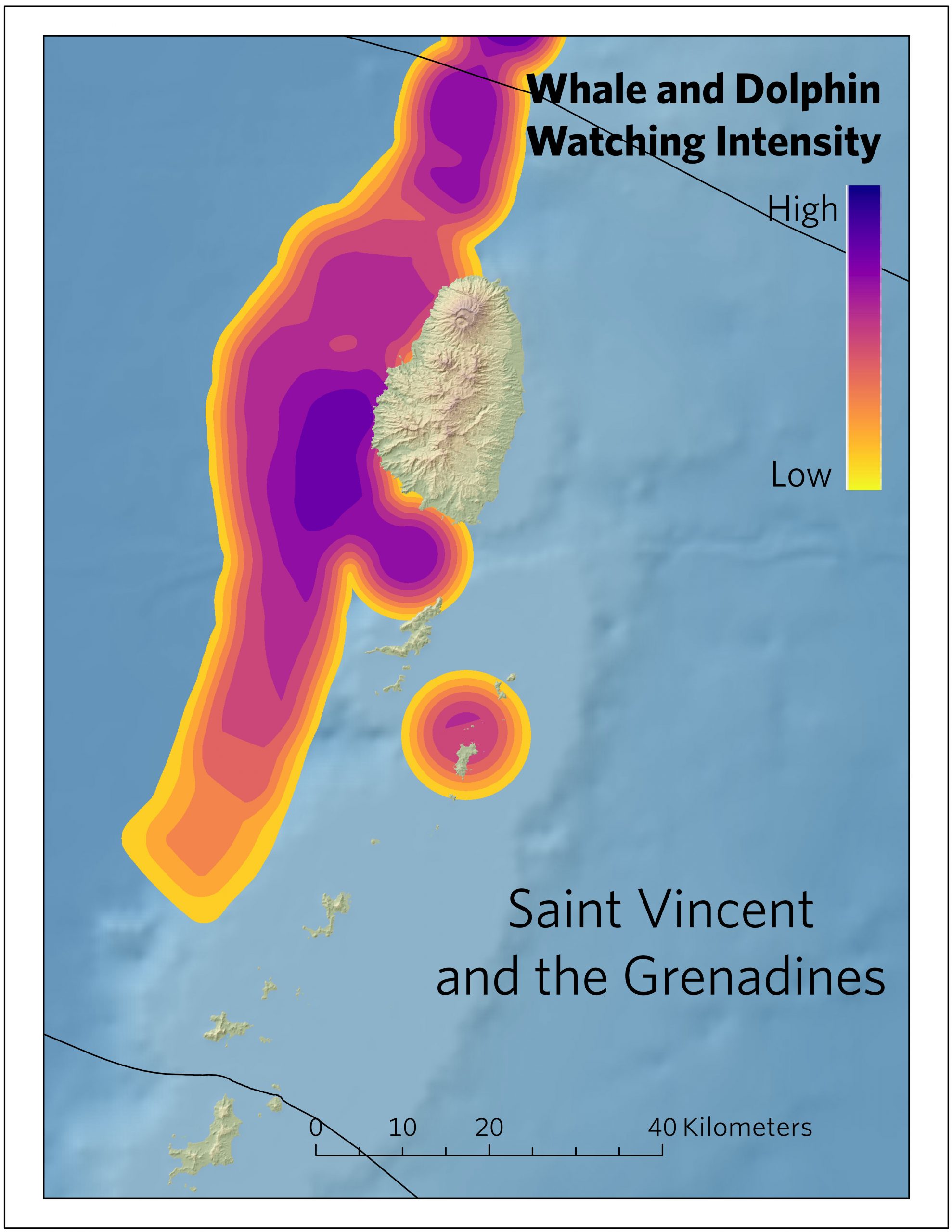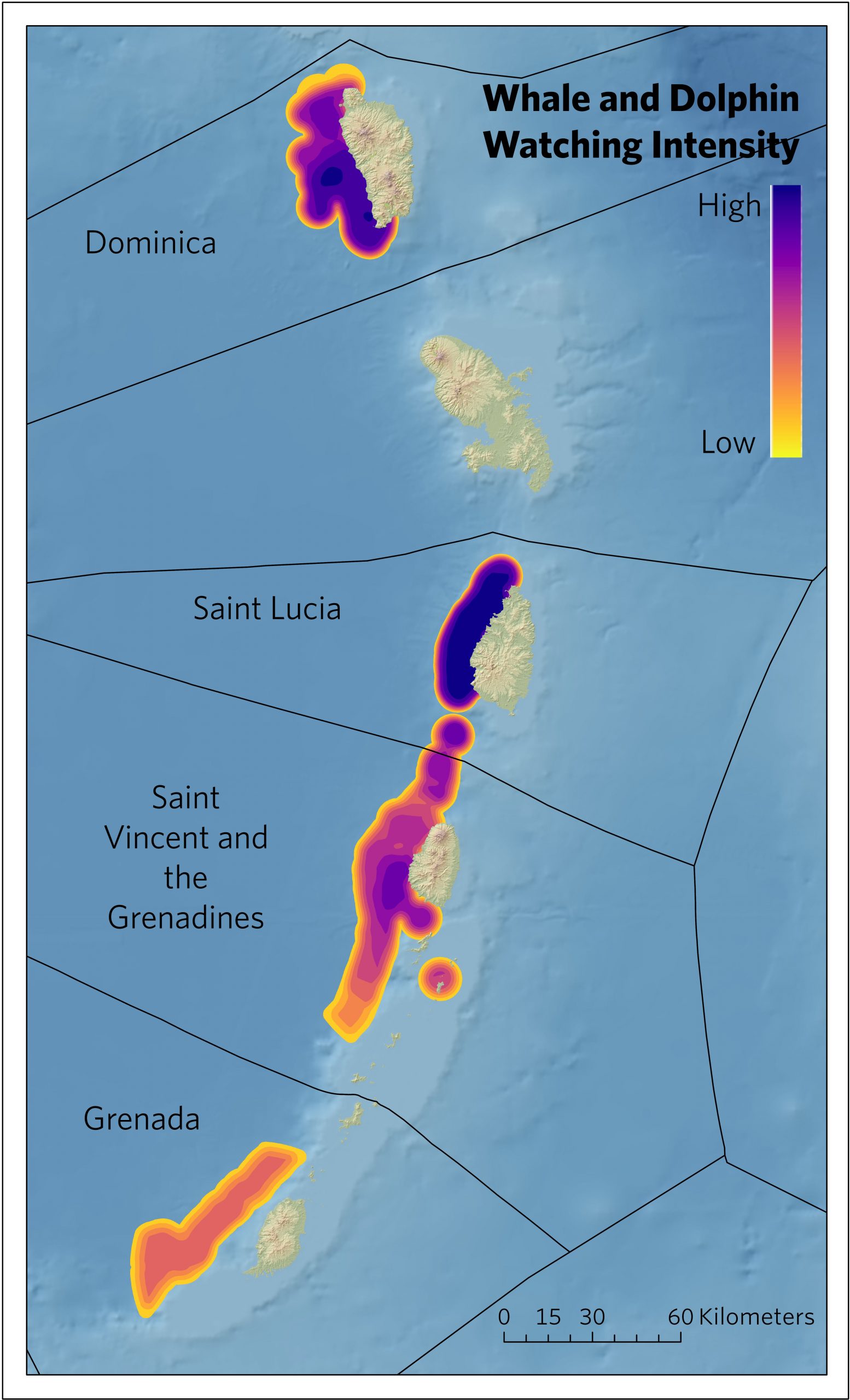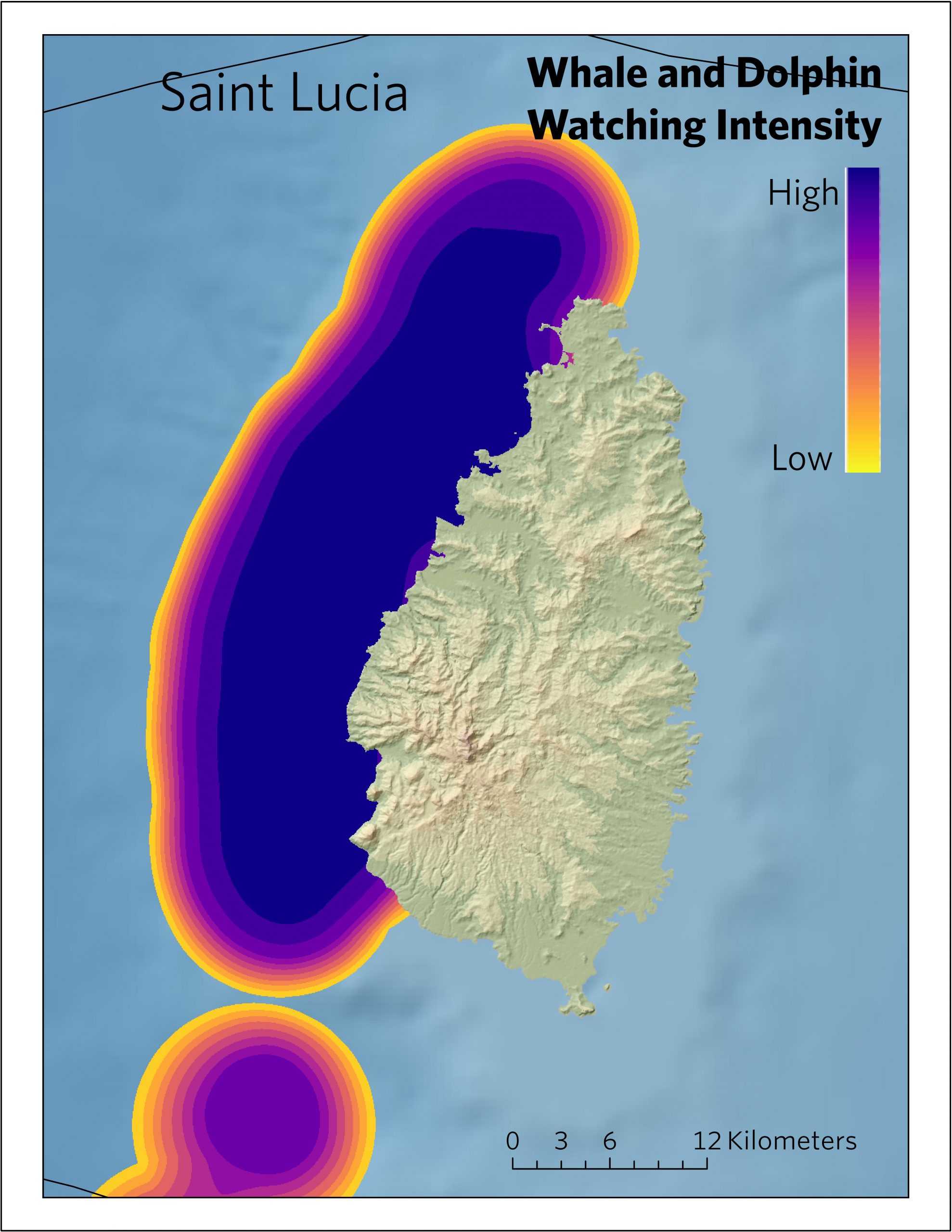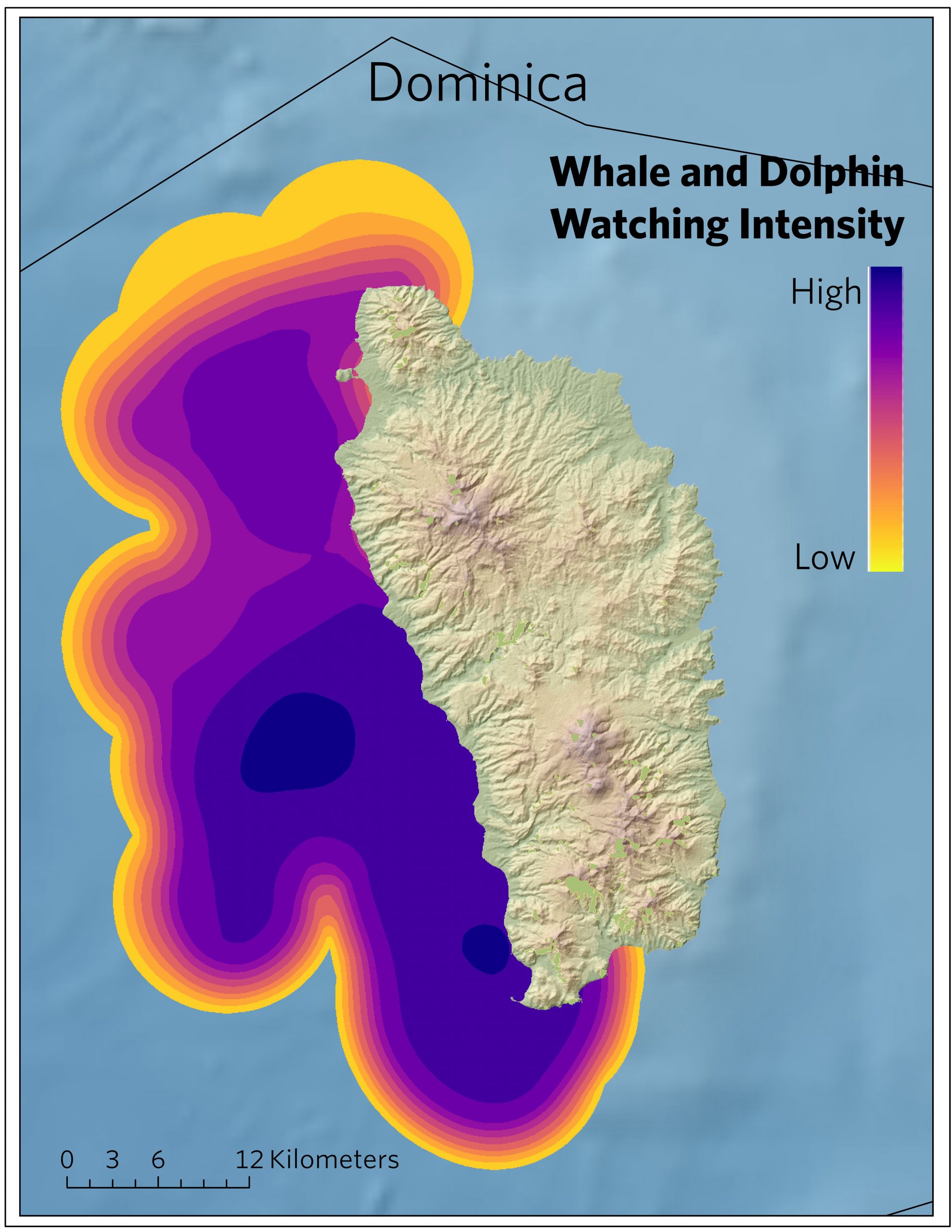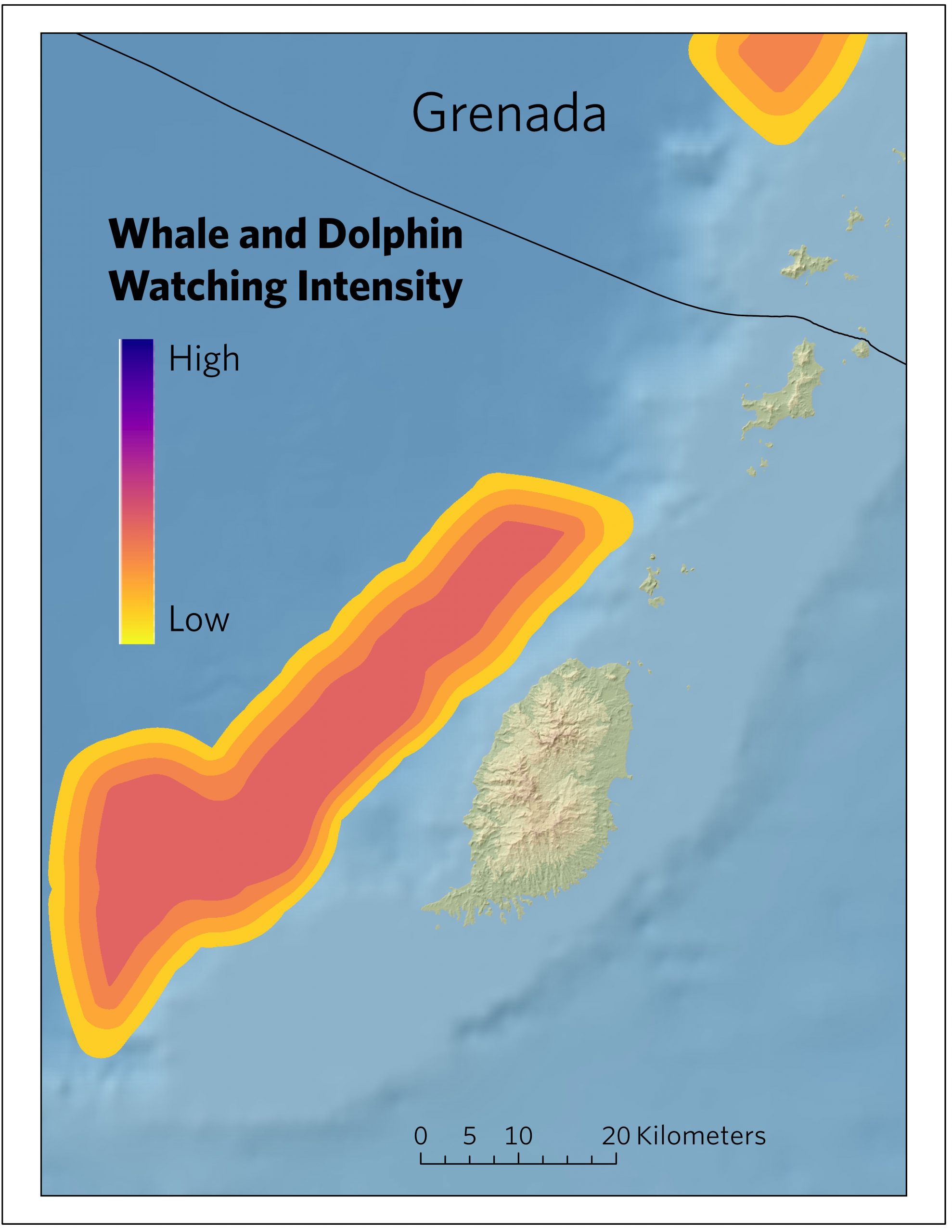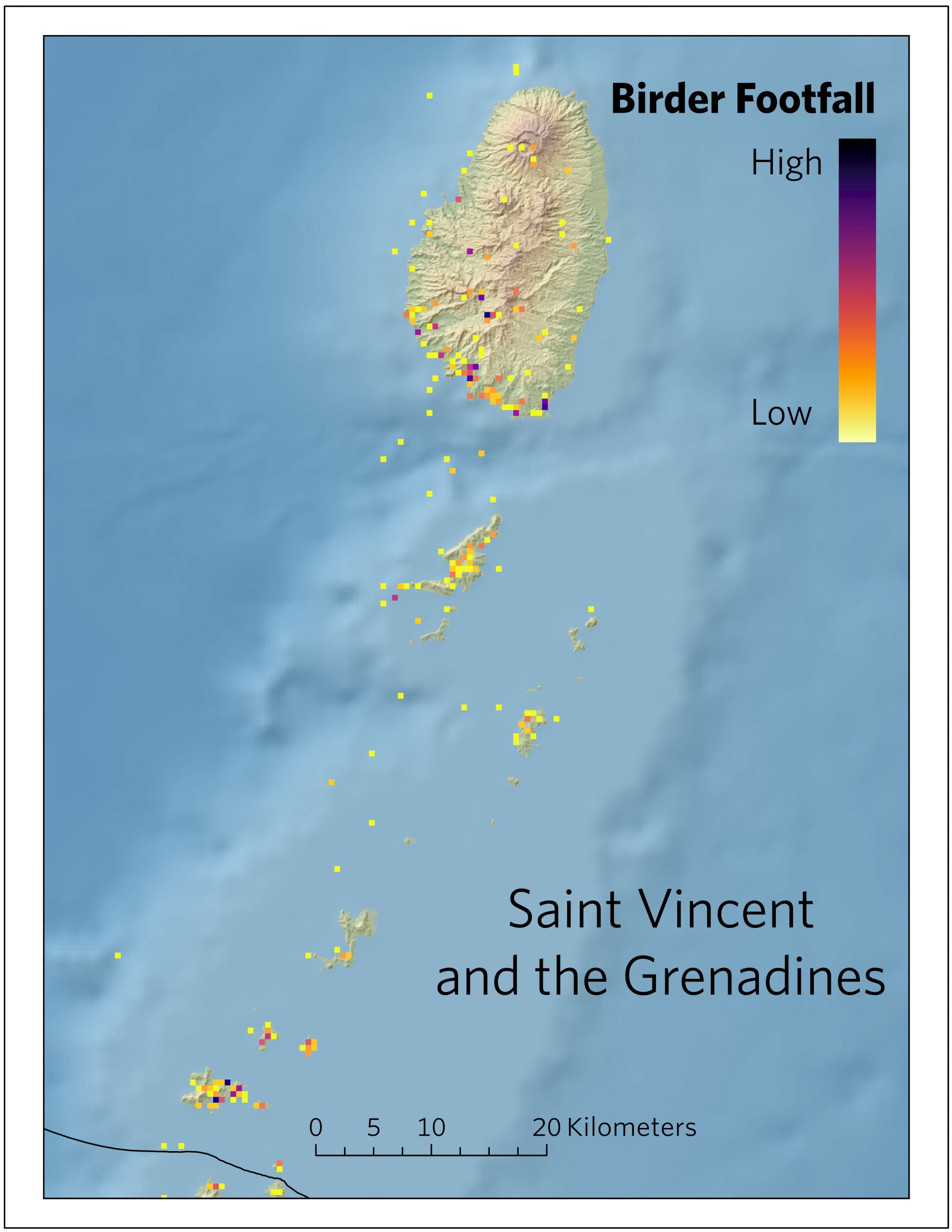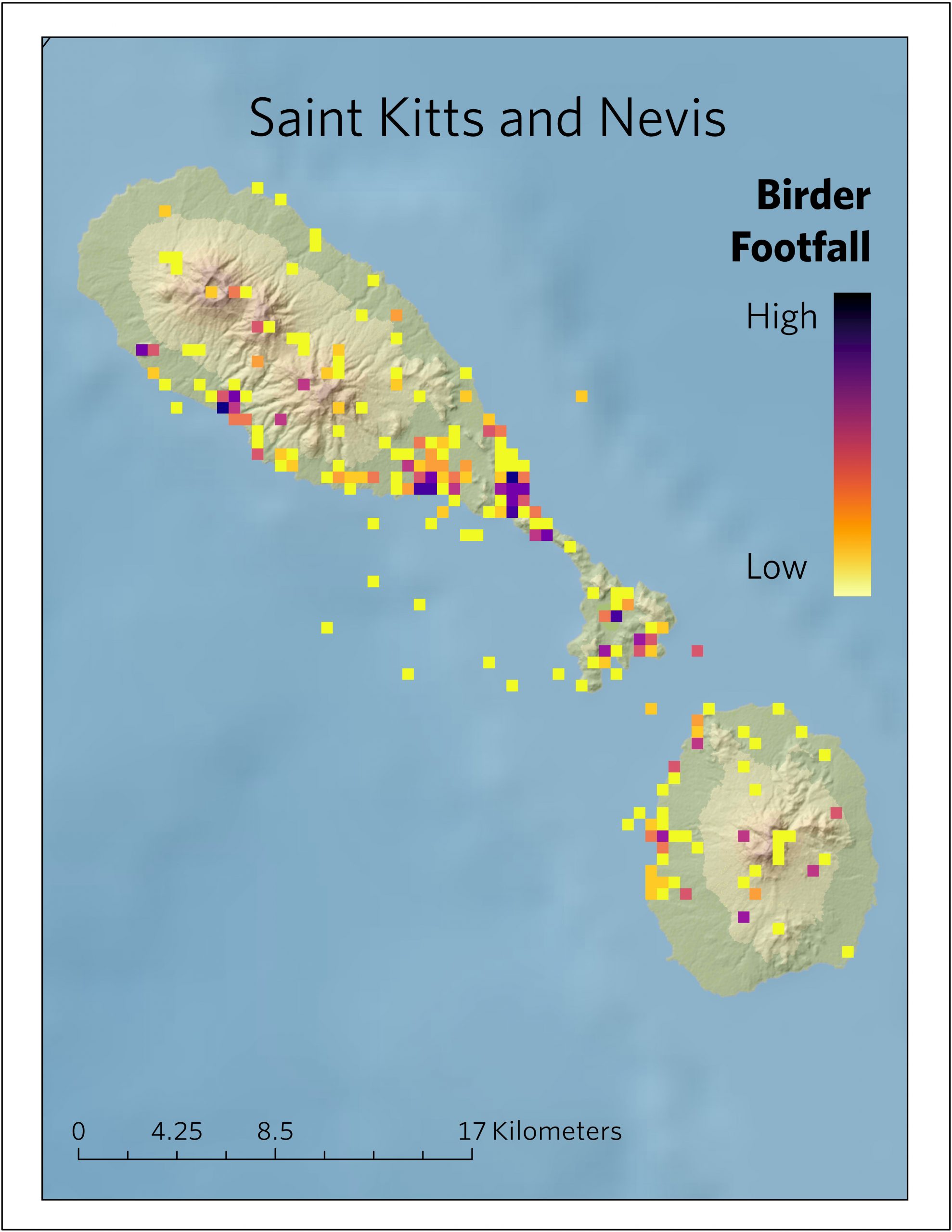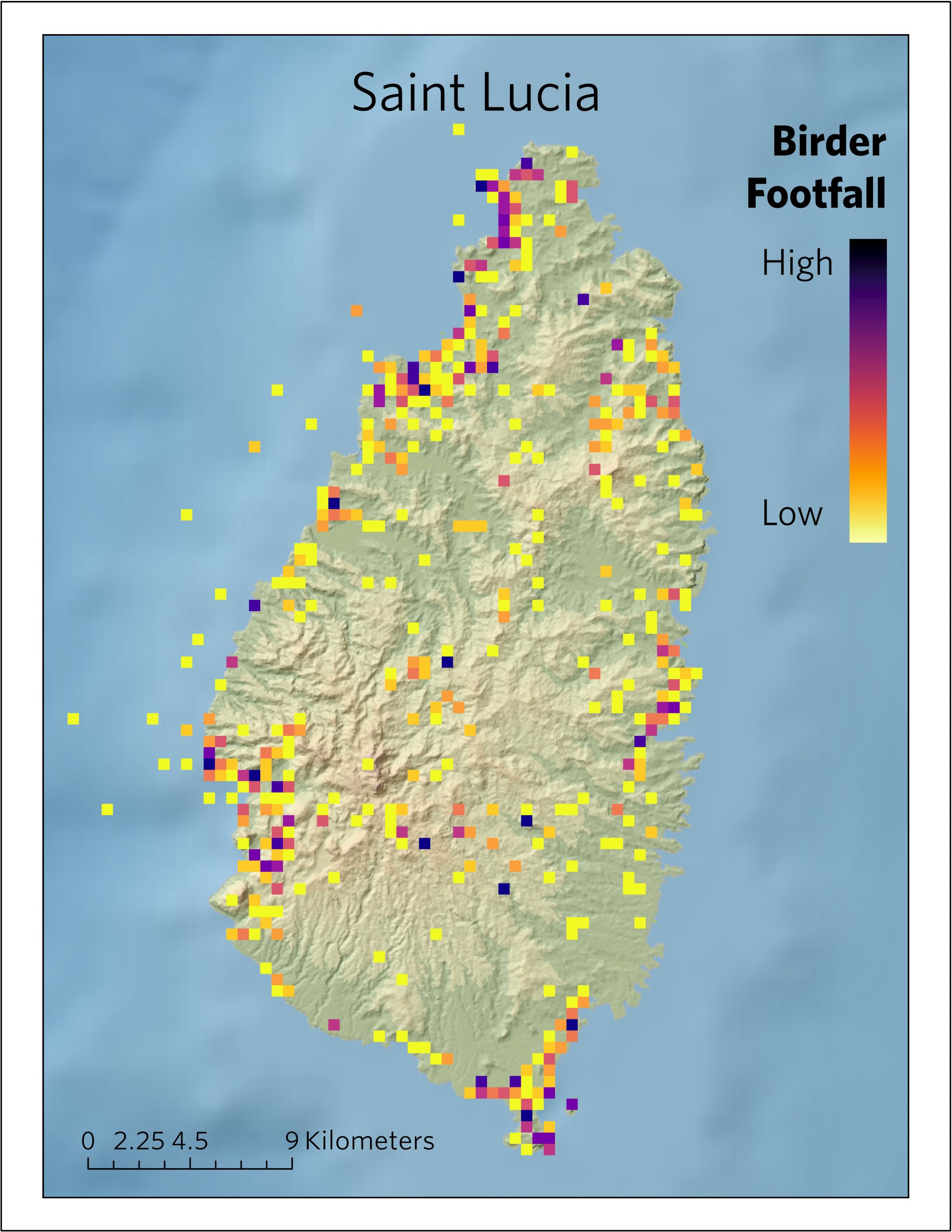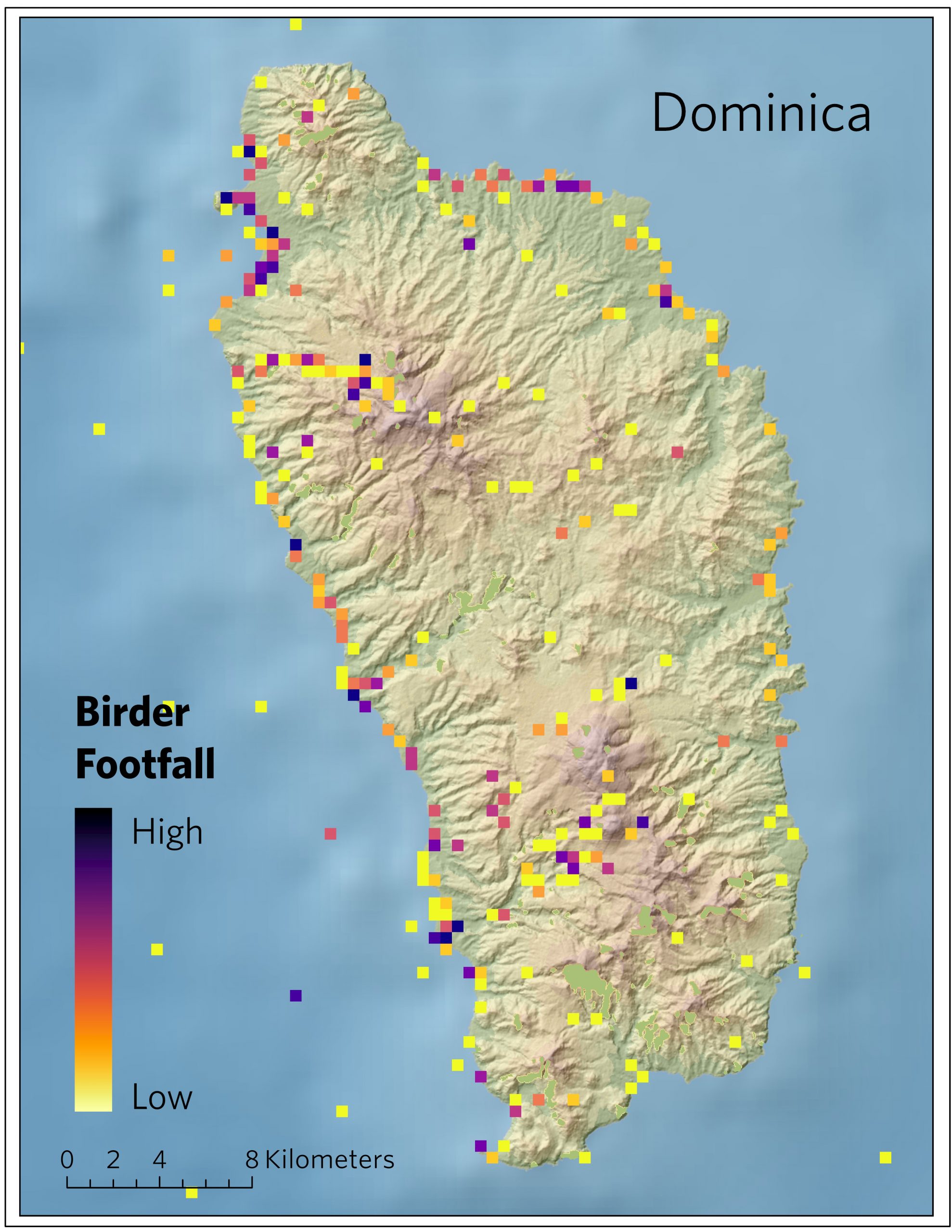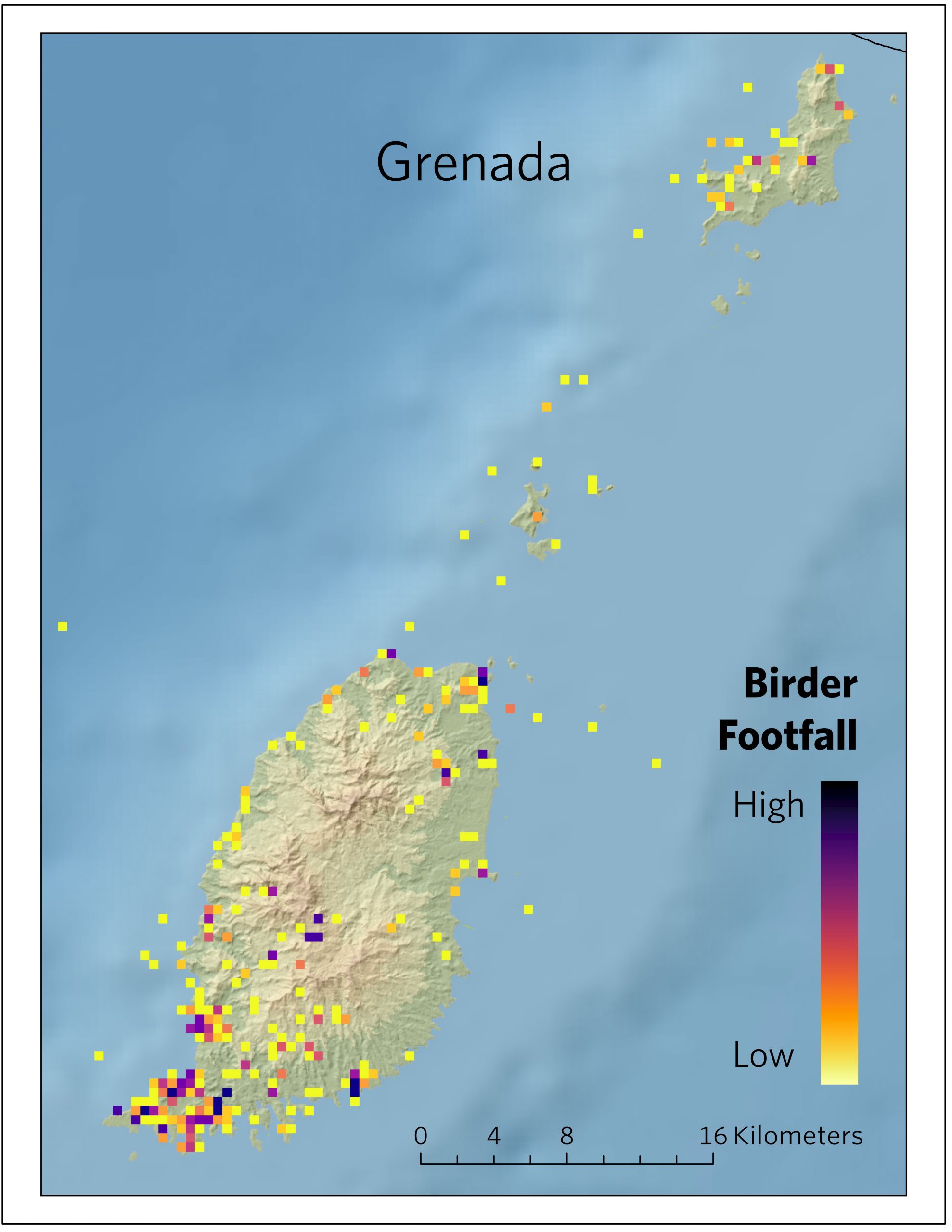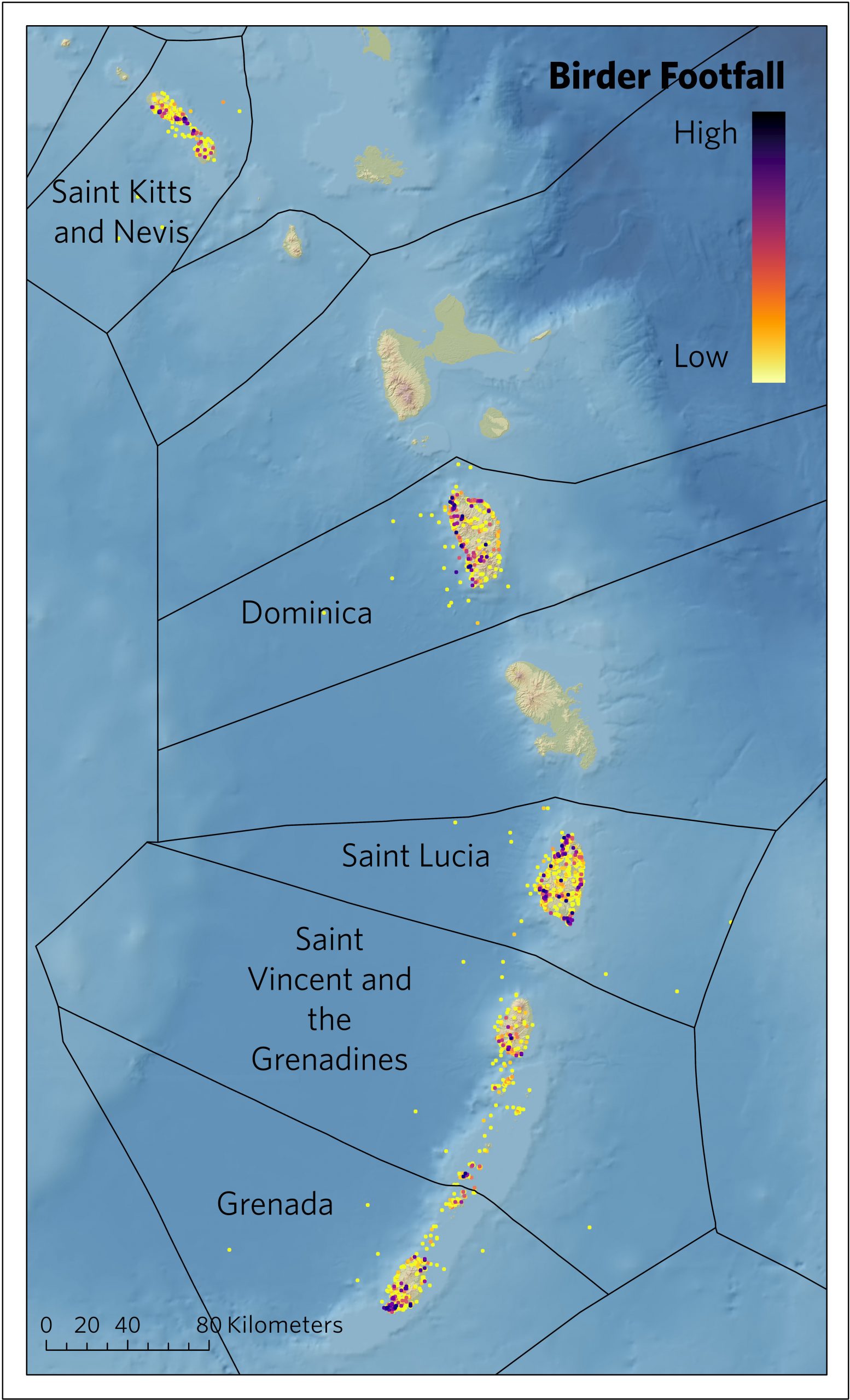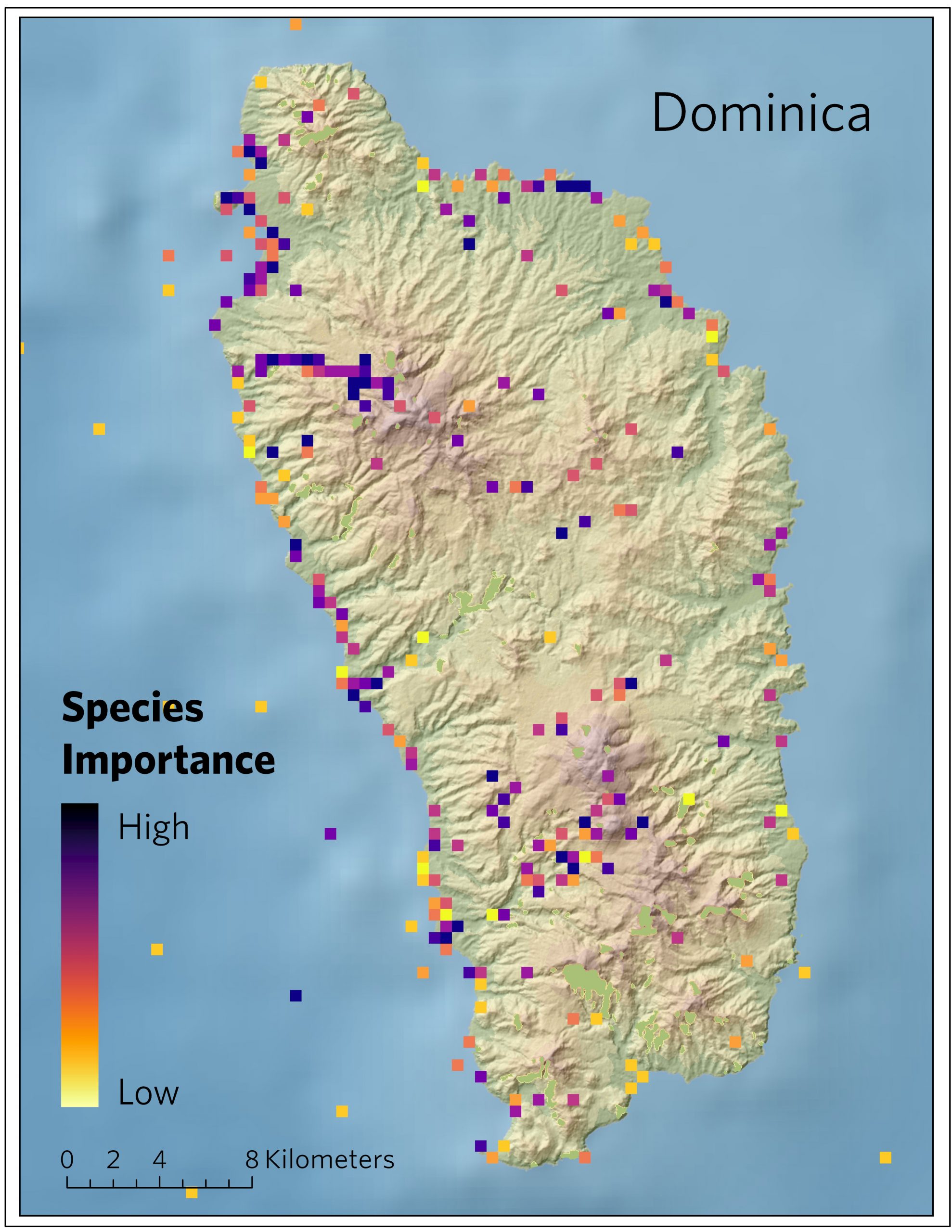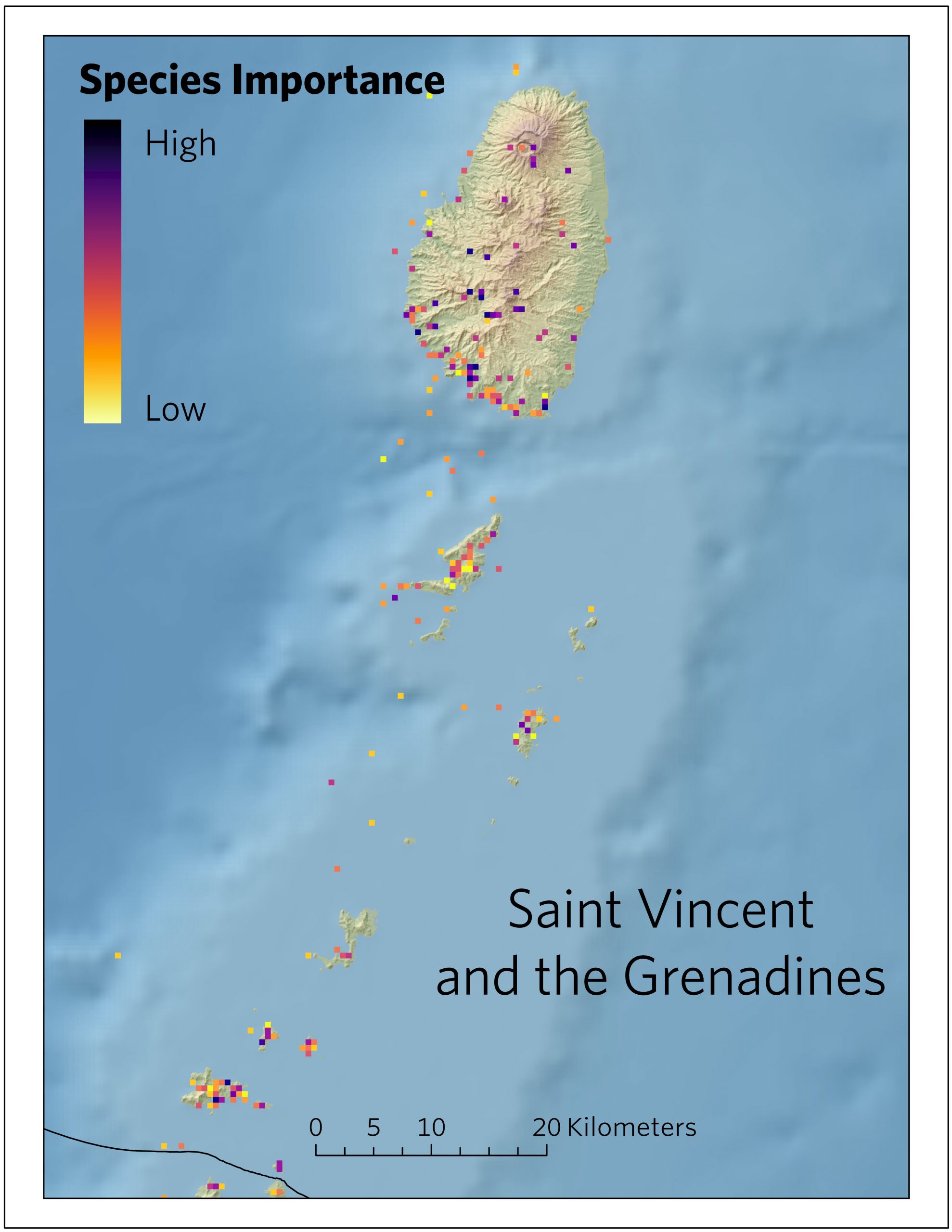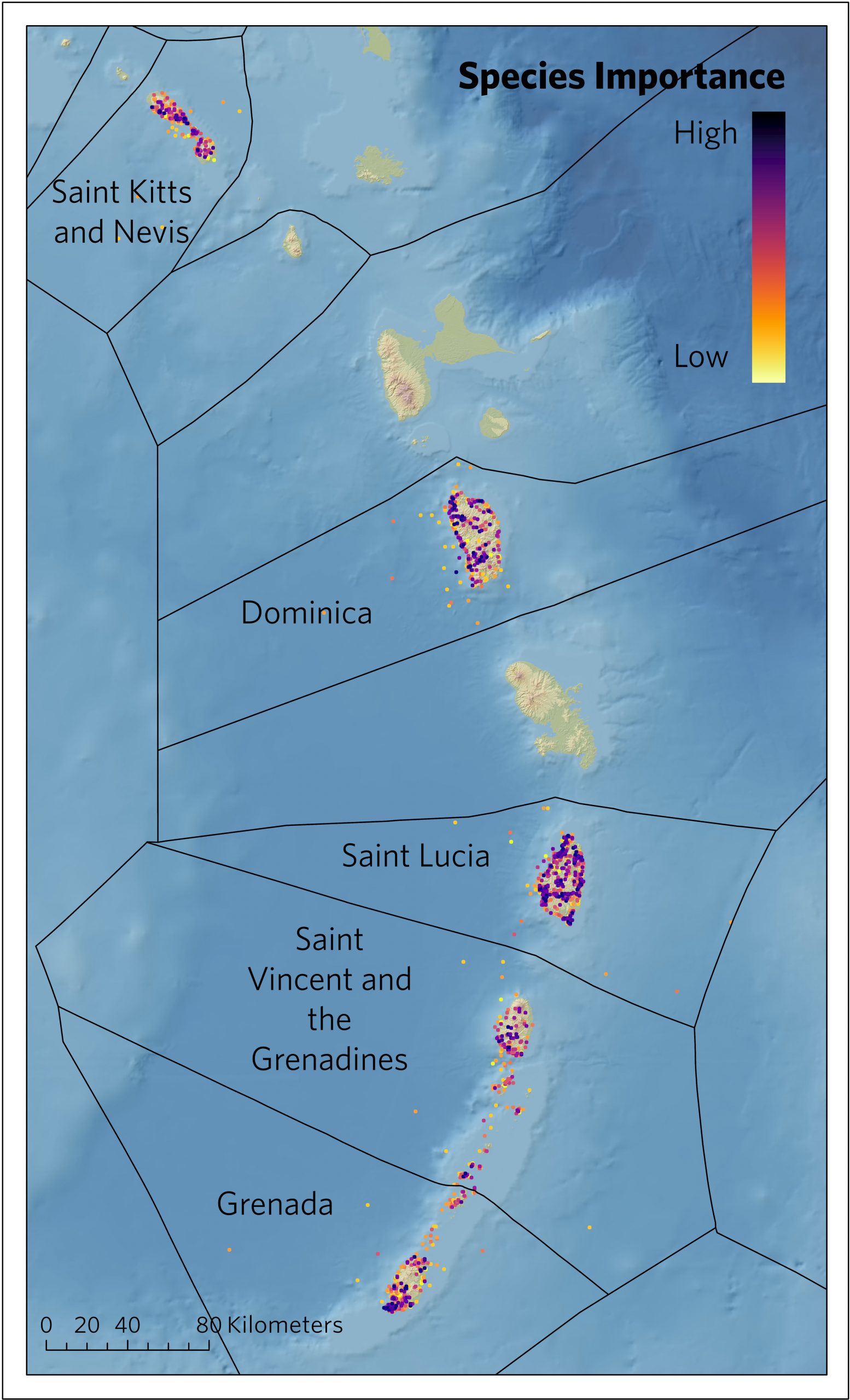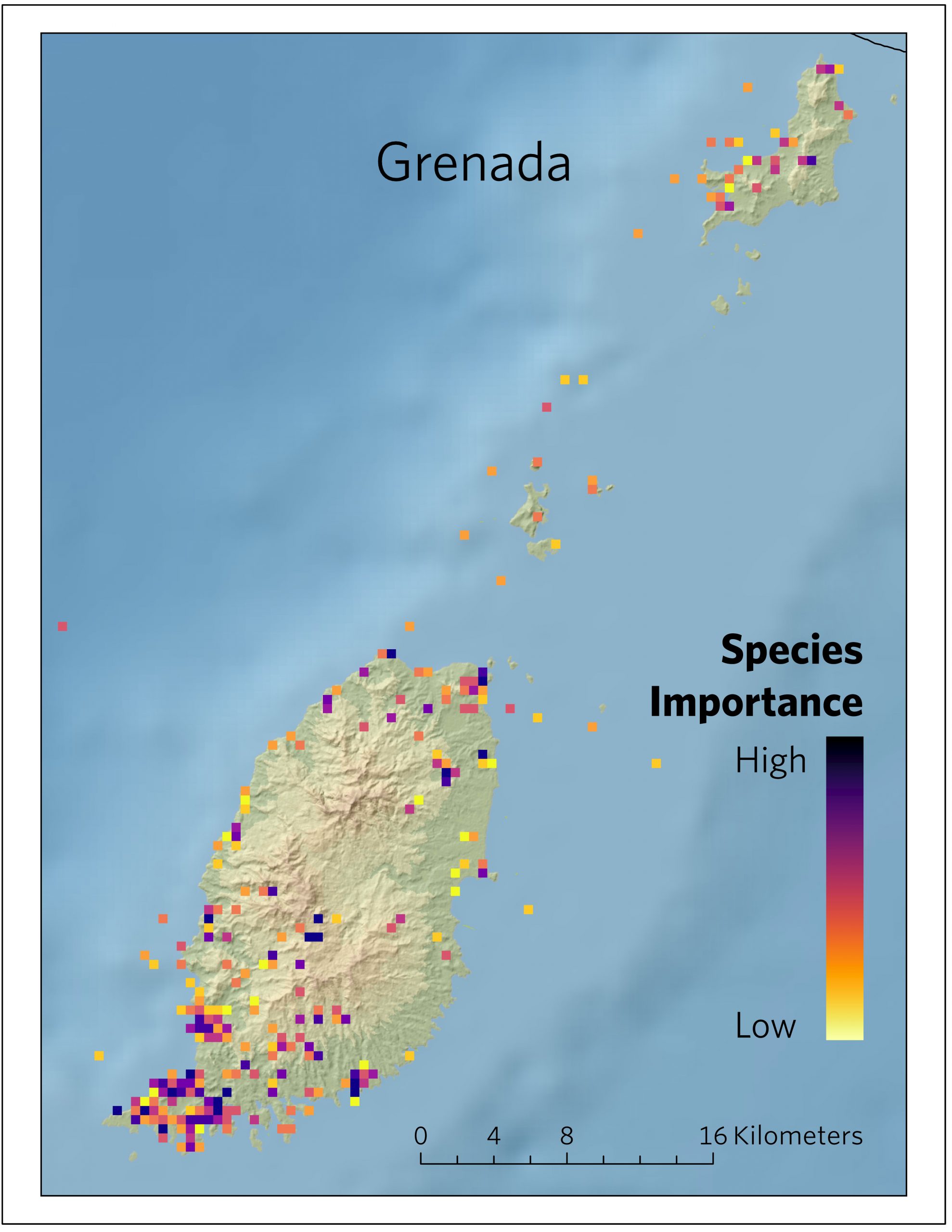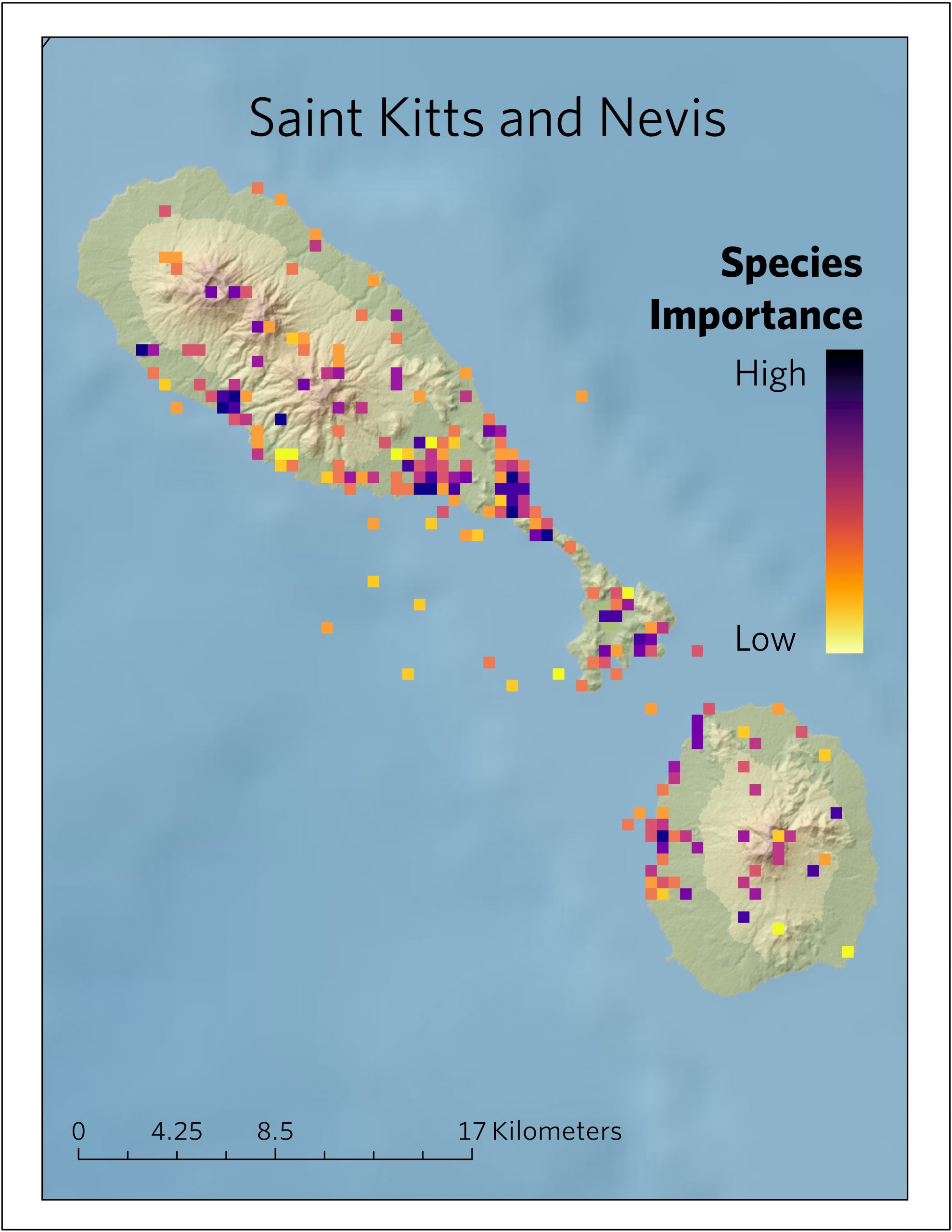The Caribbean is more dependent on the travel and tourism sector than any other region worldwide. This sector is almost entirely focused on coastal areas, notably through beach-based activities, cruise tourism and in-water activities including sailing, and diving, and other vessel-based activities. In the Caribbean wildlife tourism is considered a niche market with a diverse consumer base and a high potential for growth. In particular, wildlife tourism around birds and marine mammals (i.e., whales and dolphins) are believed to be an important draw for tourists visiting the CROP countries, and also warrant consideration from the perspective of sustainable tourism development.
The region’s interesting and diverse avifauna provides a unique selling point for certain visitors choosing between various destinations, and the Caribbean has a significant opportunity to tap into the growing interest in birdwatching, especially from US-based tourists. The opportunity to see whales and dolphins in the wild is a clear draw for many of the CROP countries, especially Dominica, where sperm whales inhabit the country’s deep offshore canyons. Despite this, like many aspects of nature-dependent tourism, map-based data depicting the distribution of these activities across the region have never been generated until now.
In order to map and quantify birding activity, we developed 3 separate metrics. Birder footfall capture birdwatching effort, based on eBird observation data, and the total scores capture only one record per observer per day. Key species are intended to characterize birds that would be of particular interest to birdwatchers, and are defined as birds that are rare, endemic, endangered, and/or otherwise charismatic (as defined by stakeholders). The Species Importance Score is a sum of each of the four key species metric applied to each species. When this score is multiplied by the number of observations of each species, and these totals are summed, this provides a total species importance metric for each country, protected area, or other spatial unit.
Both our maps and the expenditure estimates highlight the particular importance of whale and dolphin watching activities in Dominica and Saint Lucia, with St. Vincent and the Grenadines also having a nascent whale and dolphin watching industry. In all cases, activities extend out predominantly from the western shores, from coastal areas (where dolphins are more likely to be observed) out to deeper waters favoured by whales.
While the financial assessment is drawn from a relatively small sample size and were not inclusive of Grenada or St. Kitts & Nevis due to insufficient data, the results of our whale and dolphin tourism assessment indicate a direct expenditure of over $US 5.7 million per year for this sector.
The information and maps resulting from this project represent a valuable addition to the data already released in earlier reports which, combined, provide the most comprehensive review of nature dependency in tourism we are aware of, not only for the CROP countries, but likely anywhere in the world. The data have a role to play not only in raising awareness, but in direct management responses. In large part the maps are of sufficient resolution to be used in marine spatial planning and in future exercises to prioritise the development of protected areas or other management interventions.
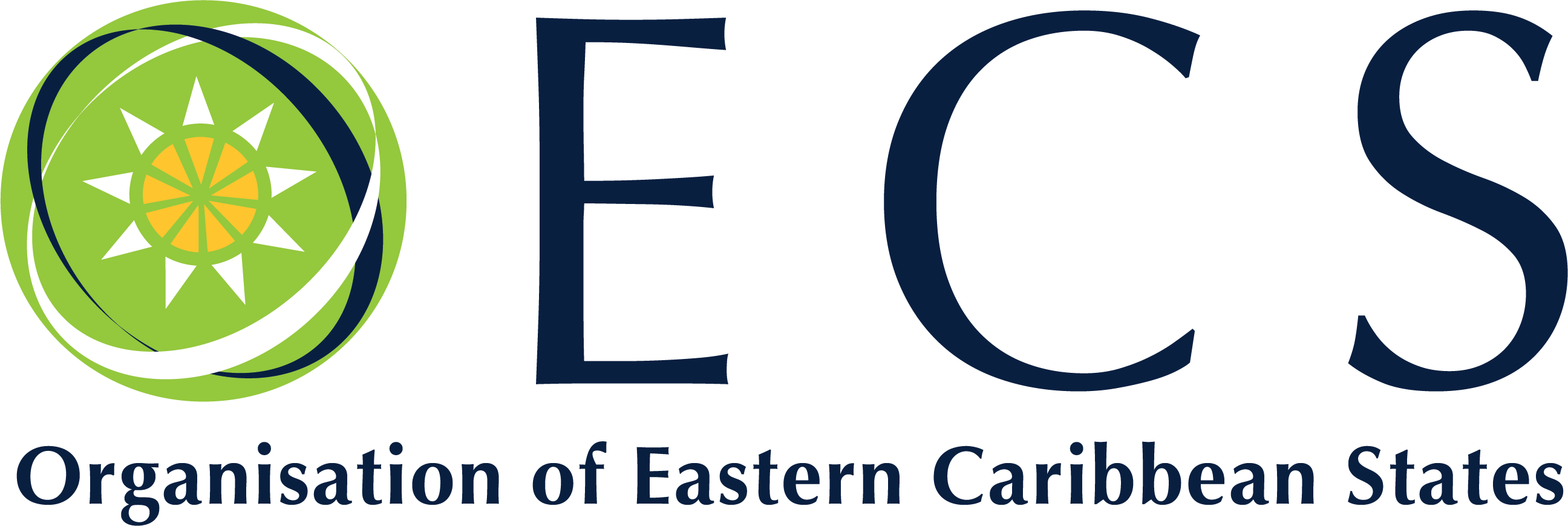
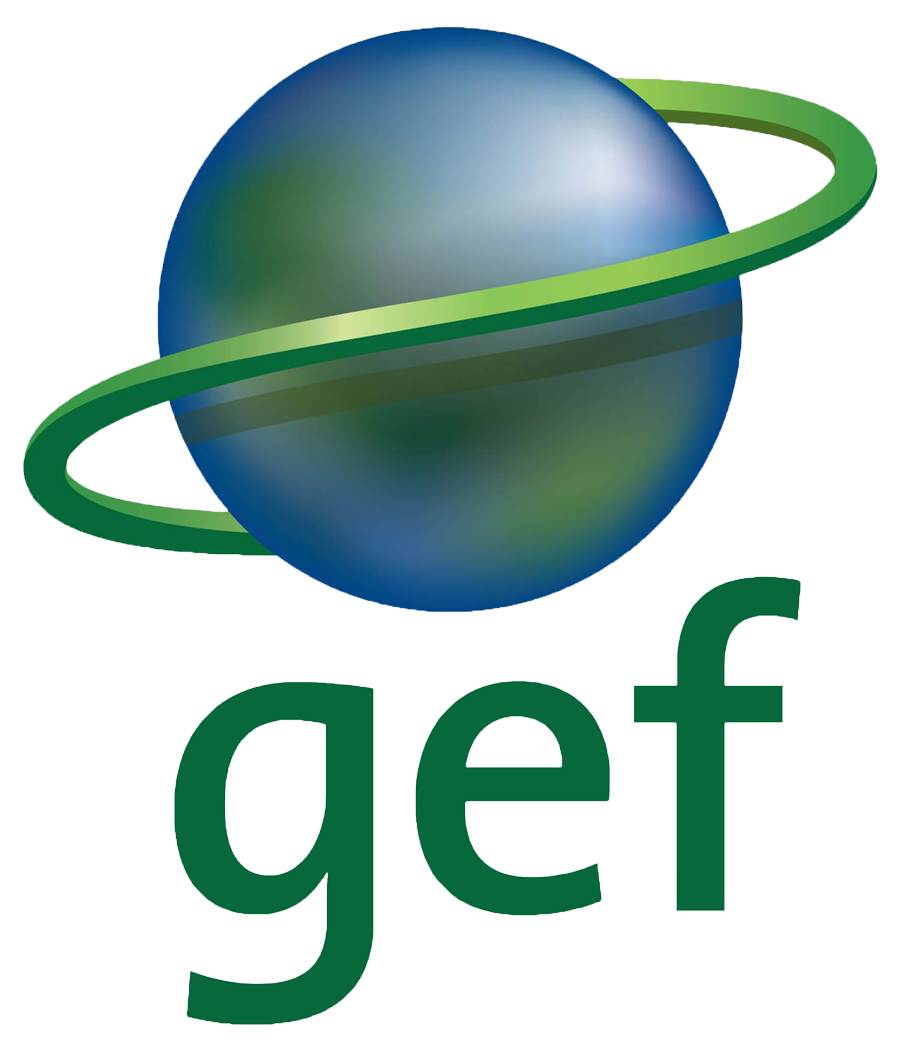

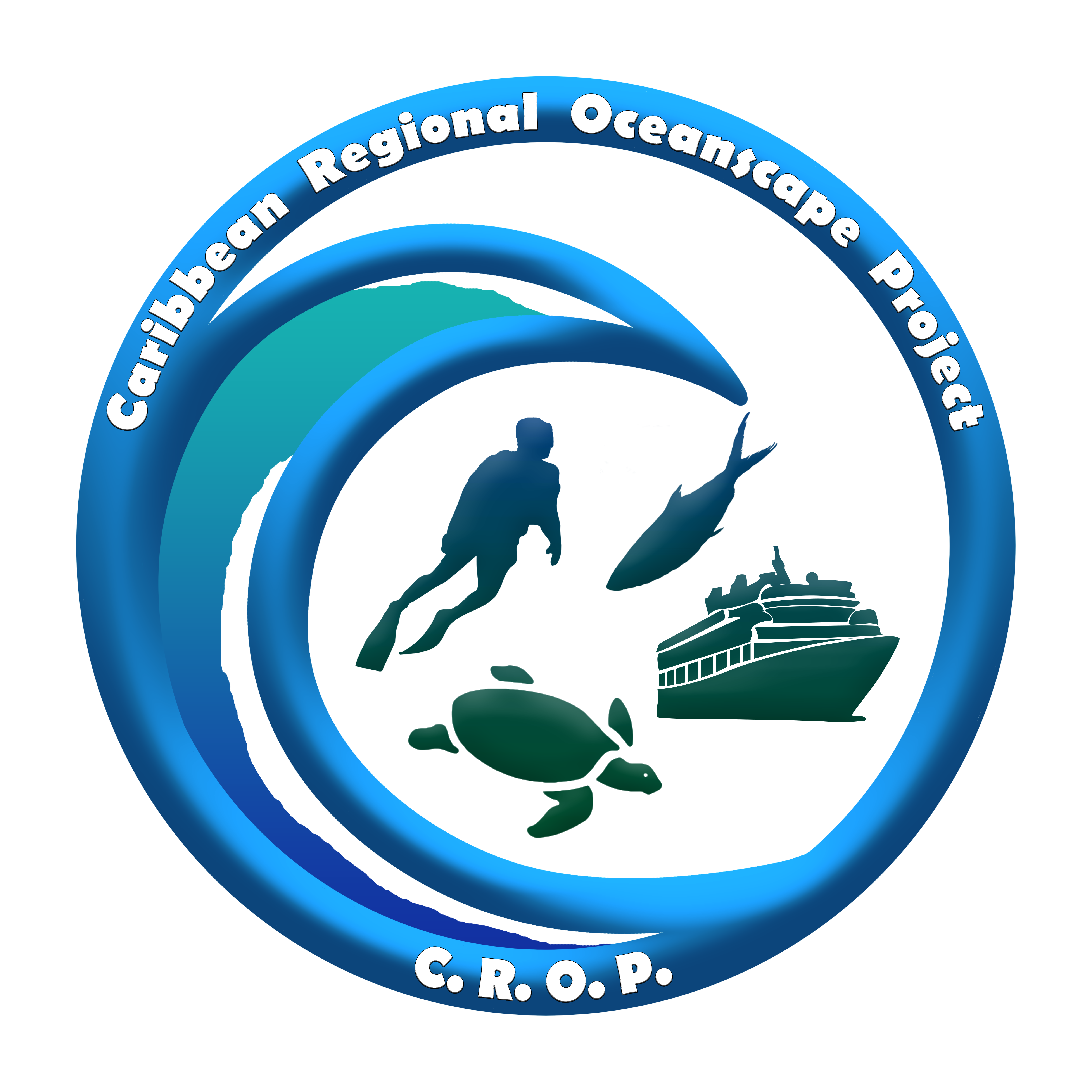
Image Credits: © Alex Oathout/TNC Photo Contest 2019

